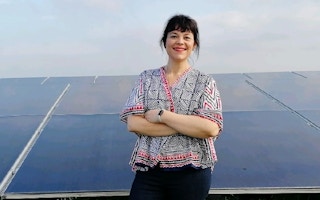Asia Pacific Resources International Limited (APRIL), one of Asia’s largest pulpwood producers, has appointed Susan Slabbert as interim head of sustainability for Asia Pacific Rayon (APR), a subsidiary that produces rayon fibre for the textile industry.
To continue reading, subscribe to Eco‑Business.
There's something for everyone. We offer a range of subscription plans.
- Access our stories and receive our Insights Weekly newsletter with the free EB Member plan.
- Unlock unlimited access to our content and archive with EB Circle.
- Publish your content with EB Premium.
Slabbert has been appointed to manage the firm’s sustainability operations and coordinate its 2030 commitments, which include net-zero emissions from land use and a 50 per cent increase in plantation productivity by the end of the decade.
Slabbert’s focus will be on APR’s manufacturing operations at its mill complex in Pangkalan Kerinci, Riau.
APRIL’s plans to significantly expand production in Riau have alarmed environmentalists, who question whether the company can realise its growth ambitions without putting natural forests under pressure. APRIL, however, has said it has no intention to expand its plantations.
APR recently had its wood-fibre based viscose certifed as “ocean safe” as the fibre biodegrades in sea water.
Slabbert was previously a contract environmental and sustainability specialist for the company. Over her career, she has worked as an environmental control officer for a coal-fired power station and coal mine in South Africa.
She replaces Cherie Tan, who moved on after four years with APR to join German agrochemicals giant Bayer, as Asia Pacific head of sustainability.














